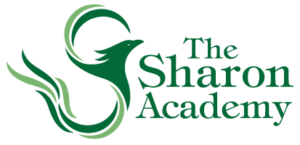Teaching Kids in the Way They Learn Best
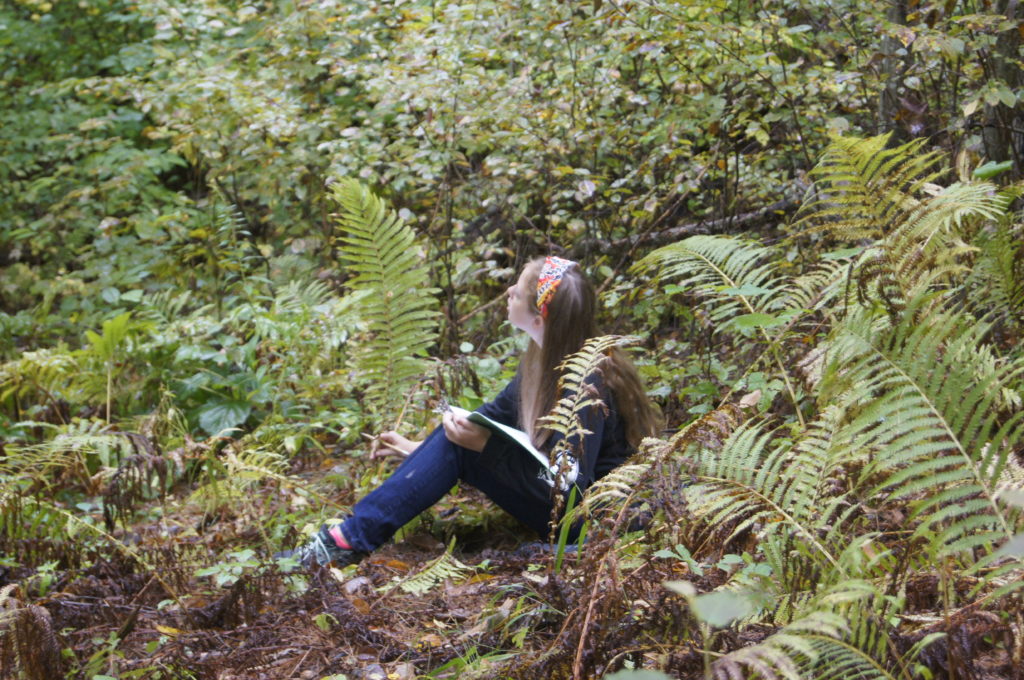
Kids learn best when they are interacting with their subject matter: doing, creating, explaining, experiencing and using their senses. “At The Sharon Academy Middle School, we have created a curriculum that gives students more than one mode of learning and encourages students to engage with the topics they are studying,” explains Andrew Lane, the Director of TSA Middle School. “This stimulates the brain in more than one way, increasing the likelihood that students will absorb the information.”
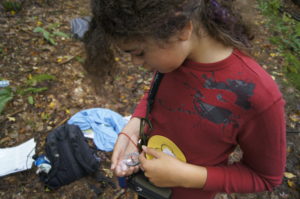
7th Grader learns to read a compass.
The Middle School teaches a two-year rotating curriculum to classrooms comprising 7th and 8th graders. This year’s curriculum examines the themes of identity, responsibility, and action from two content areas: Living in Vermont and This I Believe. The guiding question for the year is “Who am I?”Each topic is explored across disciplines, so that science, art, literature, and social studies are each examining the same content through different lenses, creating and reinforcing a more complete image of the topic. Importantly, this “Integrated Curriculum” also places knowledge within a context: often answering that common question: “When am I ever going to need to use this outside of school?”
This school year started off with the first theme, Living in Vermont, which asks students to reflect on how Vermont’s cultural traditions, physical landscape, climate, and biome help to shape who they are as individuals.
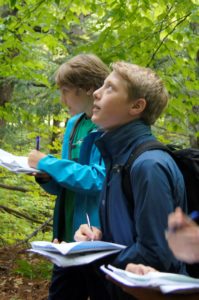
Students identify trees.
“This approach personalizes the content and allows students to experience it,” says Lane. “Instead of simply learning about invasive species in a text book, they are in the river, catching crayfish or in the forest identifying trees. Additionally, they are learning how the fact that they can walk out their door and go into the forest affects how they view the natural world.”
“Learning can be messy, and the temptation is to make it very structured and predictable. However, when teachers allow learning to be messy, you can get more interesting outcomes. That’s when students have breakthroughs,” noted Andrew Lane about this interdisciplinary approach.
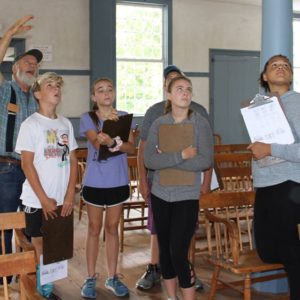
MS Students at the Justin Morrill Homestead in Strafford, VT
In September, students visited the Justin Morrill Homestead in Strafford, Vermont to study the history of the settlement of Vermont as well as the culture, laws, and government of Vermont in order to understand the role of history, tradition, and government in their own lives. They read literature that stimulated discussion about place and identity, created picture books about themselves as Vermonters, developed their writing skills by describing life in Vermont to pen pals, and studied the work of the artist Andy Goldsworthy, ultimately creating their own nature-based art from the Vermont landscape. The students developed several skills while absorbing subject area knowledge. “It’s fun to do learning this way,” commented one TSA Middle Schooler.
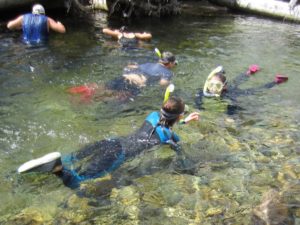
Students use snorkels to explore deeper parts of the river.
Another key aspect of the unit is its physicality. The outdoor excursions leveraged the energy of young teens, engaged them in their immediate world, and tapped their natural curiosity. Early in the unit, they donned snorkeling gear to plunge into the White River where they discovered the animals that live there and considered their role in the history and ecology of the river. They then learned about the scientific method to conduct experiments on the rusty crayfish, an invasive species that could not be returned to the river, to answer the academic question, “what is the effect of claw size on fights won over food?”
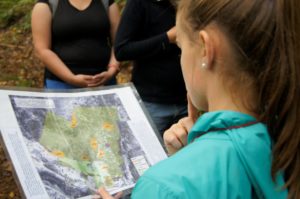
TSA MS student learning to read a map in the Lingelbach Woods
Over the course of the unit, the students explored not only the river, but also the woods and hills. TSA is very fortunate to have the Lingelbach Woods and Trails just behind the high school campus, and Cardigan Mountain in nearby New Hampshire. The students gained subject knowledge in geology, topography and geography by traversing the various terrain themselves and at the same time gained the skills of using a compass and reading maps. Throughout the unit, they also developed their skills of observation, literacy and communications by comparing and contrasting the flora and fauna of their environment; by identifying, catching and examining life in the rivers; and by drawing and describing tree species in the woods.
Click here to learn more about the Middle School Curriculum.
